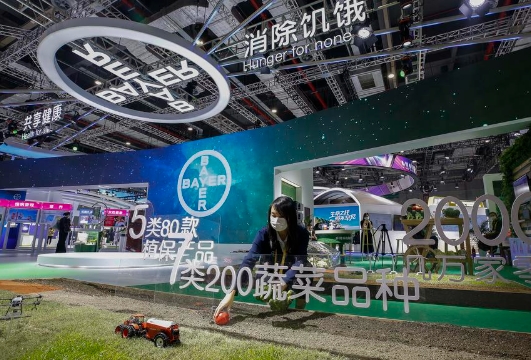China's 30-year journey to becoming powerhouse in international patents

An aerial drone photo shows a train for China-Europe freight service pulling out of Tongjiang North Railway Port in northeast China's Heilongjiang Province, Aug. 9, 2024. (Photo by Wu Yunan/Xinhua)
Since joining the Patent Cooperation Treaty (PCT) in 1994, China has grown into a global leader in innovation, with the number of patent applications rising from just 98 to 69,610 last year, reflecting its significant progress in international patents over the past three decades.
On Jan. 1, 1994, when China became a member of the PCT under the World Intellectual Property Organization (WIPO), a patent agency in Shanghai submitted its clients' international applications to the national patent authority, marking the beginning of China's journey in the realm of international patent filings.
By filing a single PCT patent application, applicants can simultaneously seek protection for their inventions in numerous countries that are members of the agreement, which streamlines the process of fulfilling diverse formality requirements on an international scale.
Due to its broad recognition, the PCT has become a key indicator of a country's progress in innovation. Countries with high PCT filings are often seen as prioritizing innovation.
In the mid-1990s, the term "IP" was beginning to gain traction in China, with numerous seminars, presentations and training programs on IP being organized across the country. IP negotiations between China and the United States also frequently made headlines. By 1994, the PCT, established 16 years earlier, already included all industrially developed countries.
During that first year, China only witnessed 98 international applications. However, according to the latest WIPO data, Chinese innovators filed almost 70,000 patent applications via PCT in 2023, marking the fifth consecutive year China has ranked first globally. The country also led the world in patent applications for solar cells and held the highest number of valid global patents from major new-energy vehicle producers.

An aerial drone photo taken on Sept. 12, 2024 shows a partial view of a 50-megawatt molten-salt solar thermal power plant in Naomaohu Township of Hami City, northwest China's Xinjiang Uygur Autonomous Region. (Xinhua/Hu Huhu)
"China is now a patent powerhouse and a model for developing countries," Lisa Jorgenson, WIPO deputy director general, said at the celebration of the 30th anniversary of China's accession to the PCT in Beijing in October.
These achievements have not come easily. Since joining the PCT, China has continuously improved its domestic IP legal system. The Patent Law and its implementation regulations have undergone multiple amendments to align with international rules.
Over the past 30 years, numerous Chinese enterprises have made their mark on the global stage through the PCT, investing in IP efforts to fuel their innovative growth.
Xiaomi is one such company. Cost-effectiveness used to be its primary competitive advantage in market penetration. However, few customers are perhaps aware that the domestic smart electronics maker has been one of the leading international invention patent filers among all Chinese enterprises.
A decade ago, Xiaomi faced a patent dispute with Ericsson over smartphone technology in India. This "growing pain," a common challenge for many Chinese companies expanding globally, prompted Xiaomi to shift its focus from cost competitiveness to intellectual property competitiveness. As a result, the company significantly increased its investment in research and development, consistently enhancing its performance and design.
This shift is particularly evident in the new energy vehicle sector, where Xiaomi has made notable strides. The company, a newcomer to the electric vehicle sector, has secured 257 patents in battery technology.
Patent transfers have not only made a great contribution to revenues but also provided strong support for the company to explore new business areas and enhance market competitiveness globally, said Liu Zhen, vice president of Xiaomi's legal department.

People visit the booth of Chinese company Xiaomi at Cairo ICT 2024 in Cairo, Egypt, on Nov. 20, 2024. (Xinhua/Ahmed Gomaa)
China's surge in global patents has been supported by its steady economic development and commitment to fostering independent innovation. In addition, the Chinese IP authorities have also actively assisted domestic enterprises in resolving IP disputes overseas, offering information, guidance and training to help them navigate potential risks.
At the same time, China has reaped two-way benefits from its participation in the PCT. By consistently updating its laws to align with international standards and addressing IP infringements, China has created a fairer and more transparent business environment, encouraging many multinational companies to increase their investments in the country.
Pharmaceutical company AstraZeneca is a case in point. In 2021, AstraZeneca faced a challenge from a generic drug company regarding its patented diabetes medication, which was still under protection. After a thorough review of the evidence presented by both sides, the China National Intellectual Property Administration (CNIPA), the country's top IP regulator, upheld the validity of the patent.
Similarly, Bayer, another pharmaceutical giant, won a lawsuit against a patent infringer in China in 2019, securing a court-ordered payment of 25.62 million yuan (about 3.5 million U.S. dollars). This marked the largest compensation awarded in patent disputes in the country's medical device sector.
"The introduction of punitive damages has significantly strengthened the deterrent effect against IP infringement," said Liu Hongqiang, Bayer China's vice president in charge of IP. "I am confident that China's innovation environment will continue to improve."

A staff member works at the booth of Bayer at the Medical Equipment and Healthcare Products exhibition area during the third China International Import Expo (CIIE) in Shanghai, east China, Nov. 7, 2020. (Xinhua/Zhang Yuwei)
Stronger legislation and tough responses to breaches have also spurred the growth of foreign patent filings. From January to October this year, China authorized 92,000 foreign invention patents, a year-on-year increase of 5.3 percent. The registration of foreign trademarks in China climbed to 121,000, up 13.1 percent compared to the previous year.
China has also actively strengthened its cooperation in the PCT field, forming partnerships with over 80 countries, regions and international organizations, while also playing an active role in the revision and improvement of international rules.
Taking the opportunity of the 30th anniversary of China's accession to the PCT system, China looks forward to deepening its exchanges and cooperation with WIPO and IP management agencies worldwide, according to Shen Changyu, commissioner of the CNIPA.
"China is committed to participating in PCT governance, enhancing international IP rules, and providing innovators with higher quality and more efficient services to help modernize the PCT system and ensure that the benefits of innovation are shared more broadly," Shen said.
Editor:伏娅敏
